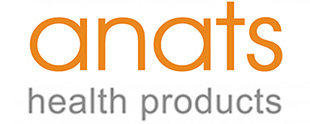OXYGEN PROVISION FOR NASAL USE
Oxygen provision for nasal use with 2 meters tube. With light weight and small size, the nasal oxygen cannula provides oxygen therapy with ease of movement and easy installation.The oxygen supply is exclusively nasal and the tube is 2 meters for ease of movement at home.
Oxygen provision for nasal use
OXYGEN GLASS WITH TUBE 210cm
The length of the tube is 210cm
They are made of excellent plastic and high quality. The tube is manufactured in a way so as if it is folded at 90 degrees angle the flow rate of oxygen will not be interrupted.
The external diameter of the connectors is 12mm
Their placement is easy and they are firmly supported by the patient.
Oxygen rino glasses (or nasal cannula ) for nasal use .
The Nasal Cannula is used to deliver supplemental oxygen to patients who have a prescription for home oxygen therapy
. Prior to home use, you and/or your caregiver should receive instructions from a trained healthcare professional on how to safely use yournnasal cannula while on oxygen.
Nasal Cannulas are disposable and for single-patient use.
Nasal CannulaS are intended for use in the home, outpatient, extended care, transport and hospital environments.
Nasal cannulas are available in sizes from infants to adults. The nasal cannulas are available in different styles with various lengths of supply tubing. Some styles may have liter flow limitations, which will be stated on the product label.
What are nasal cannulas and face masks?
Nasal cannulas and face masks are used to deliver oxygen to people who don't otherwise get enough of it. They are commonly used to provide relief to people with respiratory disorders.
A nasal cannula consists of a flexible tube that is placed under the nose. The tube includes two prongs that go inside the nostrils. A face mask covers the nose and mouth.
Both methods of delivery attach to oxygen sources, which come in a variety of sizes.
Nasal cannulas and simple face masks are typically used to deliver low levels of oxygen. Another type of mask, the Venturi mask, delivers oxygen at higher levels. Sometimes nasal cannulas are also used to deliver high levels of oxygen.
Why are nasal cannulas and face masks used?
Nasal cannulas and face masks are typically used to treat people who have respiratory conditions such as:
Asthma, bronchopulmonary dysplasia, chronic obstructive pulmonary disease , pneumonia, sleep apnea, cvstic fibrosis.
They can also be administered in hospitals to people who have experienced trauma or acute conditions such as heart failure.
Benefits of oxygen therapy include more energy and ease with breathing.
How are nasal cannulas and face masks used?
Before prescribing treatment, your doctor will perform some tests to measure how much oxygen you already have in your blood. They may take a sample with a needle or use a sensing device. When placed against your finger or toe, the sensing device, called a pulse oximeter, uses light to measure the amount of oxygen in your blood. No blood draw or needle is necessary.
Oxygen can be administered with nasal cannulas or face masks in hospitals, clinics, or specialized care facilities. It can also be administered in a home setting or even on the go. Some devices are portable and can be slung over a person's shoulder.
Venturi masks provide a constant, preset level of oxygen. They are commonly used to control a person's carbon dioxide retention as well as to supply supplemental oxygen.
Nasal cannulas are the most common method for oxygen delivery. This is primarily because they are less intrusive than other options and allow a person to eat and speak freely.
